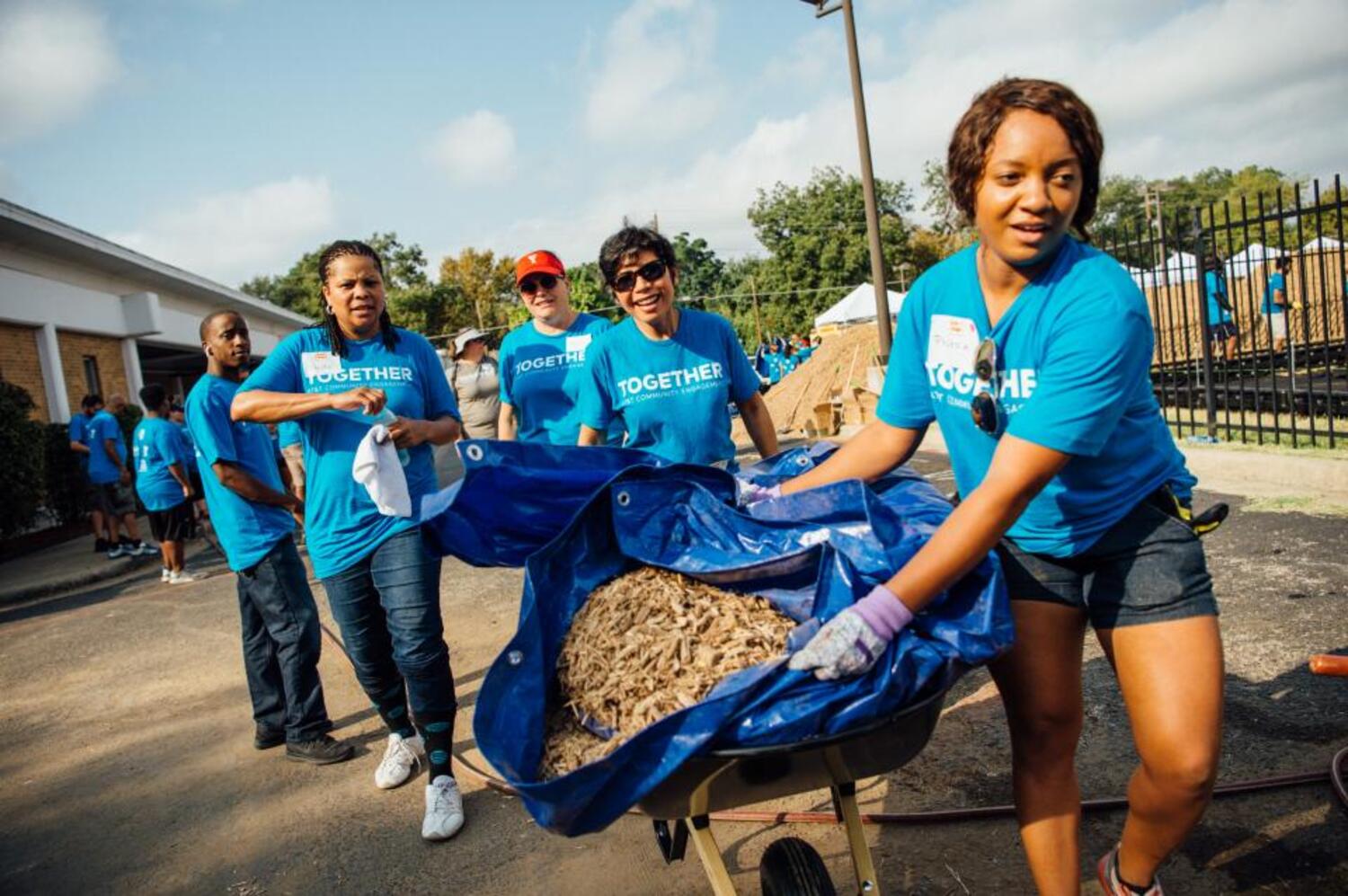Belonging, Diversity & Inclusion
Creating a sense of belonging takes effort, but the return is worth it. Here's how every leader can make employees feel like essential teammates, as opposed to meaningless cogs in the machine.
In a great workplace, employees feel like they belong to something greater than themselves.
They don’t feel pressured to assimilate or conform, nor do they feel ostracized or excluded because of who they are. They feel seen as insiders, yet celebrated for their unique contributions.
At Great Place To Work®, data is collected via confidential employee surveys to tap sentiment around management, promotion practices, emotional and psychological safety and more. These scores reveal whether workers feel like they belong – or like an outsider looking in.
Workplaces with high belonging scores consistently deliver better business results. In our research, 64% of employees are more likely to be engaged in high levels of innovation when they feel they “make a difference.”
Conversely, employees with a low intent to stay are dissatisfied with their organizations in regards to:
- Gender equity
- Fair promotions
- Fair pay
- Unequal or limited growth opportunities
Creating a sense of belonging in the workplace
In our For All™ model, a framework and body of research that measures the consistent employee experience across demographics, several key drivers can either hinder or boost feelings of belonging for workers.
Here’s a look at the actions that are most helpful when looking to cultivate belonging in the workplace:
1. Ensure leaders avoid favoritism
Creating a culture of office politics and backstabbing can undermine trust, and lead workers to feel their workplace isn’t fundamentally fair. Competition can be healthy, but cutthroat cultures can destroy camaraderie and community.
Poor leadership can also develop blind spots, such as "executive blinders” – a phenomenon where men in executive positions are 2.6 times more likely than women executives at the same company to perceive fair treatment for all employees.
Even leaders who are committed to creating an equitable workplace must challenge themselves to find places where they are falling short. For example, 100% of executive sponsors of employee resource groups say company leadership encourages participation across ERGs, but only 52% of ERG leaders agree.
Poor leadership and favoritism will mar efforts to create an inclusive workplace, while great leaders will foster a welcoming home For All.
2. Employees feel involved in business decisions
For workers to feel like they have some agency over their work, companies must commit to listening.
“This isn’t accomplished by handing out an employee survey and responding by adding a perk or two,” writes Michael Bush, CEO of Great Place To Work. “That’s good, but what’s great is listening to employees in a variety of ways.”
Great workplaces must insist on collecting qualitative data, hold listening sessions and have an open-door policy. Ask your employees:
- What is your story?
- What is it like to be you?
- What more can we do?
And when employees tell you what they need, your leaders must follow through. Don’t bother holding the focus group if you don’t plan to act on those insights.
3. Provide equal and transparent access to information
Although the data clearly shows that organizations that focus on purpose are more likely to have a great employee experience, it’s all academic without clear communication.
Siloed communication undermines camaraderie and teamwork. It tells some workers they are on the outside, not trusted with vital business information. When blindsided by bad news, or left out of the loop on key business decisions, they can feel betrayed and misled.
Open, teamwide communication helps everyone in the organization feel like a valued participant.
4. Fair promotion practices
Do employees feel like promotions are awarded to deserving workers? Or do they feel some employees are overlooked?
A common workplace example is the gender divide in many workplaces. Women in the workplace more often experience management playing favorites and handing out promotions and work projects unfairly.
Promotions are your organization’s opportunity to demonstrate its values, and a key area where your organization can fail to live up to its stated ideals. If your leaders tout the importance of women workers, but keep overlooking them for promotions, trust is lost.
And those women will feel they don’t belong in your organization.
5. Recognizing employees for their hard work
When employees are recognized for their contributions, the organization signals that it values their unique potential. Workers that feel appreciated are more likely to report that they feel cared for by the organization, and that there is greater camaraderie within their team.
Recognition programs also help with other elements of belonging. Compared to those who do not feel consistently recognized at work, people who do feel recognized are:
- 6 times more likely to think promotions are fair
- 2 times more likely to say innovative thinking is embraced
- 2 times more likely to say people at their organization go above and beyond
Recognition doesn’t have to come from the top, either. Peer-to-peer recognition has been shown to boost feelings of belonging, according to a Workhuman study.
When everyone is empowered at an organization, the data shows that 87% percent of workers feel higher levels of belonging. When only managers or senior leaders can recognize their colleagues, those percentages drop to 72% and 68%, respectively.
6. Make employees feel welcome
Businesses that are able to make new team members (and their ideas) feel welcome outperform the competition, according to the data.
Here are some ideas for helping employees feel welcome:
- Recognize the impact of a new member. What talents or insights do they bring that you are excited to engage with?
- Don’t tie all work perks to tenure. When new folks can’t enjoy the full work experience, they will feel left out.
- Actively seek new members’ ideas. Get them involved in critical business operations from day one.
Creating a sense of welcome isn’t a foreign concept for business leaders. It’s often done for customers and clients, and those values can easily be used with employees. It just takes commitment.
7. Embrace the whole human being
To foster belonging, employees must feel like they can bring their whole self to work. It’s something many employees don’t feel safe doing in their current organization.
At the Fortune 100 Best Companies to Work For®, 88% of employees feel like they can be themselves, as opposed to only 64% at an average workplace.
To help ensure employees feel like they can be their complete and true self, make sure you find ways to celebrate differences. For LGBTQIA+ workers and their allies, make sure your organization is comfortable “saying gay” and shining a light on their experience. Work with ERGs to celebrate cultures and traditions that matter to your workers.
Be curious about work experiences that are different from yours. Survey your employees and make sure you investigate areas where your company is falling behind.
Cultivating belonging requires commitment from the whole organization, from the CEO to the frontline employee. The best workplaces will make it a top priority in the months and years ahead, as workers continue to reassess their relationship to work and what they want from an employer.
Measure diversity, equity, inclusiveness and belonging in your workplace
Curious about how your employees feel about your organization? Get the tools and benchmarks to assess your performance and learn how you can improve the culture at your workplace.











